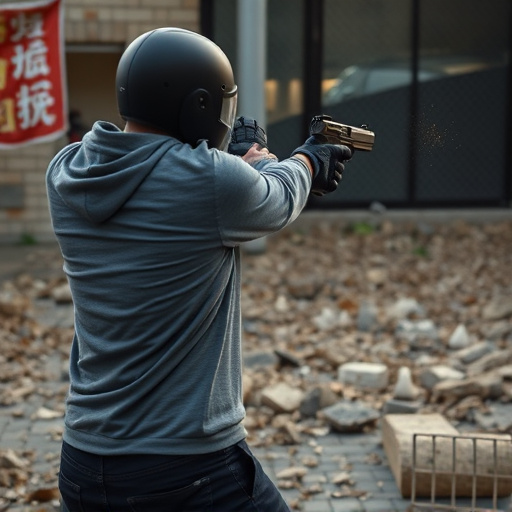The growing market for high voltage stun gun brands presents a complex challenge in public safety due to their diverse designs and advanced technology. Traditional metal detectors are ineffective against modern, discreet stun guns. Advanced detection technologies leveraging metal components, electromagnetic signatures, and radiation emissions are necessary to accurately identify these concealed devices. As leading brands incorporate enhanced stealth features, specialized equipment must adapt using sophisticated algorithms, sensor systems, AI, and machine learning to balance security and privacy concerns. Future developments include portable, real-time data transmission devices, ensuring faster response times in dangerous situations while contributing to enhanced safety and security measures.
In today’s world, concealed stun gun detection has become a pressing concern for security professionals. With the proliferation of personal protection devices like high voltage stun guns from renowned brands, effective detection methods are crucial to ensure public safety. This article explores the current landscape of stun gun detection, delving into challenges, technological advancements, and privacy concerns. We also look at future prospects, aiming to enhance detection methods while balancing security needs with individual freedoms.
- Understanding Stun Gun Detection: The Current Landscape
- Challenges in Concealed Weapon Detection: Factors at Play
- High-Voltage Stun Guns: Uncovering Detectable Features
- Advanced Technologies for Stun Gun Identification
- Privacy and Security Concerns: Balancing Detection and Freedom
- Future Prospects: Enhancing Stun Gun Detection Methods
Understanding Stun Gun Detection: The Current Landscape
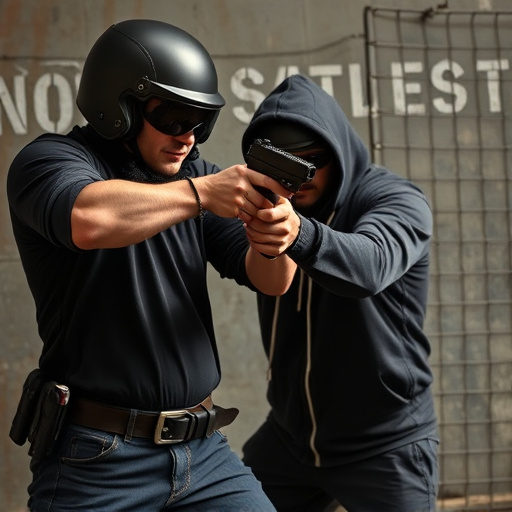
Stun gun detection technologies have evolved significantly, but understanding the current landscape is crucial in addressing concealed carry concerns. Current detection methods rely on advanced metal detectors and specialized equipment that can identify high-voltage stun guns, which are often discreetly designed to avoid detection. However, as the market for stun guns expands with various high voltage stun gun brands entering the scene, ensuring effective and non-intrusive detection remains a challenge.
The proliferation of these devices raises questions about public safety and security. Metal detectors, while effective against traditional metal objects, may not always pick up on the unique electrical signatures of modern stun guns. This gap in technology highlights the need for more sophisticated solutions, especially as stun gun designs become increasingly ingenious and harder to detect.
Challenges in Concealed Weapon Detection: Factors at Play
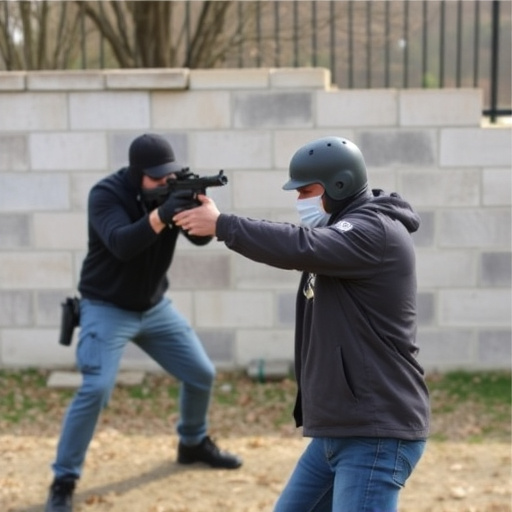
Concealed weapon detection is a complex task, especially when it comes to high-voltage stun gun brands. These devices are designed to be small and easily hidden, making them challenging to identify through traditional means. One of the primary factors at play is the lack of consistent physical characteristics across stun guns. Unlike firearms, which have distinct shapes and firing mechanisms, stun guns can vary greatly in size, design, and even power output, making universal detection methods difficult to implement.
Additionally, the technological advancements in stun gun design further complicate matters. Modern high-voltage stun gun brands often incorporate innovative features such as advanced electronics, compact designs, and improved safety mechanisms, which can mask their true nature during scanning processes. The diverse range of power levels and delivery systems also adds complexity, as scanners must be capable of recognizing a wide spectrum of potential threats to ensure accurate detection.
High-Voltage Stun Guns: Uncovering Detectable Features
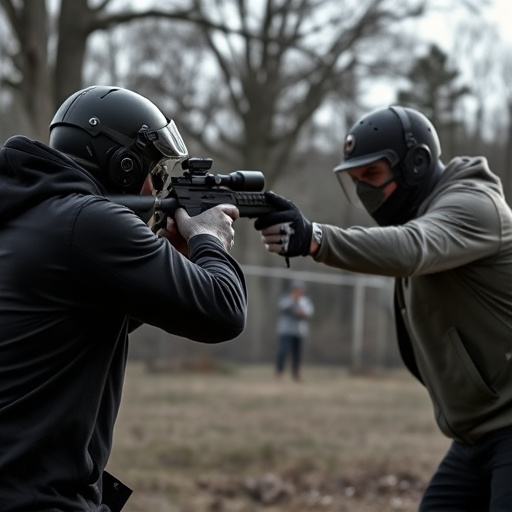
High-voltage stun guns, despite their name, aren’t always easy to detect due to their design focus on delivering a powerful shock rather than being conspicuous. However, when it comes to identifying these devices, understanding the features they share can be key. Many high-voltage stun gun brands utilize metal components, primarily aluminum or stainless steel, which are excellent conductors of electricity and can be detected by metal detectors commonly found in security settings.
Additionally, the electrical circuitry within these weapons often leaves unique electromagnetic signatures, offering another avenue for detection. While some manufacturers attempt to mask these signatures through advanced engineering, skilled professionals can still uncover telltale signs. Furthermore, the high-voltage nature of these stun guns means they emit specific types of radiation, including radio frequency (RF) signals, which can be traced under the right conditions.
Advanced Technologies for Stun Gun Identification

In the realm of concealed stun gun detection, advanced technologies are revolutionizing security measures. Modern devices employ sophisticated algorithms and sensor systems to identify high voltage stun guns, which often operate on unique frequency ranges. These cutting-edge tools can detect subtle electrical signals emitted by stun devices, making it possible to locate and neutralize hidden weapons promptly.
High-end brands in the stun gun market have responded to these concerns by developing concealed weapons with enhanced stealth features. However, as technology advances, so does the need for specialized equipment capable of penetrating these new defenses. Security professionals are continuously refining their tools to keep pace with the evolving landscape of stun gun detection, ensuring that public safety remains a top priority in today’s digital era.
Privacy and Security Concerns: Balancing Detection and Freedom

In today’s world, where personal safety is a top concern, the detection of concealed stun guns has become an intricate issue. While the primary goal is to ensure public security, the method used to achieve this raises privacy and civil liberties questions. The introduction of advanced technologies capable of identifying hidden stun guns brings both benefits and potential drawbacks. On one hand, it enhances law enforcement’s ability to deter and respond to potential threats swiftly. However, when implemented without stringent safeguards, it could lead to overreach and infringe upon an individual’s right to privacy.
The availability of powerful High Voltage Stun Gun Brands adds complexity to the debate. As these devices become more accessible, the need for sensitive detection methods becomes crucial. Striking a balance between effective stun gun detection and preserving personal freedom is essential. This delicate equilibrium demands careful consideration of technological advancements, ensuring they are employed responsibly to maintain a society where both security and privacy coexist harmoniously.
Future Prospects: Enhancing Stun Gun Detection Methods
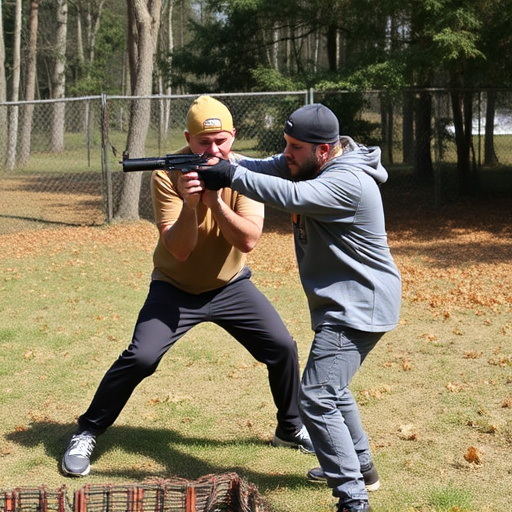
As technology advances, the detection of concealed stun guns is expected to evolve significantly. Researchers and developers are constantly seeking more sophisticated methods to keep up with the ever-changing landscape of self-defense tools. One promising avenue is the integration of advanced sensors and materials that can detect even minimal traces of high voltage stun gun brands. These next-generation detection systems could employ cutting-edge technologies like artificial intelligence (AI) and machine learning algorithms to analyze data from various sensor types, enhancing accuracy and minimizing false positives.
Additionally, the future may see more widespread adoption of portable and discreet detection devices, suitable for use by law enforcement, security personnel, and concerned citizens alike. These devices could leverage wireless technology and real-time data transmission to provide immediate alerts, ensuring faster response times in potentially dangerous situations. With ongoing innovations, the ability to identify hidden stun guns will continue to improve, contributing to enhanced safety and security measures.
As we’ve explored, concealed stun gun detection is a complex issue, balancing public safety with individual privacy. While current methods have limitations, advancements in technology like improved sensor accuracy and material analysis offer hope for more effective identification. Understanding the unique features of high-voltage stun guns from leading brands is crucial for developing robust detection strategies. Moving forward, continued research and collaboration between law enforcement, manufacturers, and advocates will be essential to create a safe and secure environment without compromising civil liberties.
